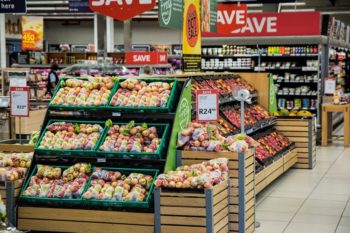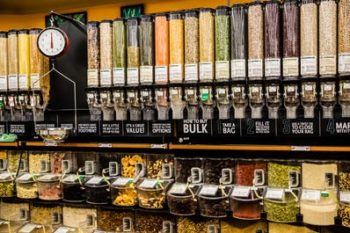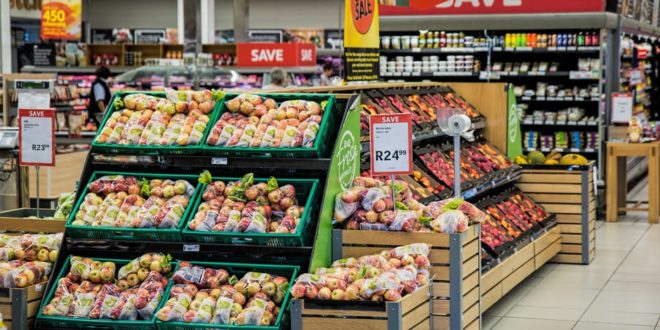As consumers, we are getting bombarded with reasons to part with our money, and supermarkets are of course no different. Here are some things to keep in mind as you cruise the aisles of your favourite supermarket.
 Impulse and temptation have quite a lot to do with store layout. Stores are designed as mazes so you have to go down every aisle to find your essentials. Even if you’ve only nipped in for a bottle of milk you often leave with an armful of other items. Sale items at the end of aisles also shout out to you to be purchased. At home you may have a cupboard full of toilet paper however, you feel like you have to get it as it’s a ‘deal’.
Impulse and temptation have quite a lot to do with store layout. Stores are designed as mazes so you have to go down every aisle to find your essentials. Even if you’ve only nipped in for a bottle of milk you often leave with an armful of other items. Sale items at the end of aisles also shout out to you to be purchased. At home you may have a cupboard full of toilet paper however, you feel like you have to get it as it’s a ‘deal’.
Likewise, low price-point temptations can be found at the check-out, these are crying out to be purchased and are often tempting items like chocolate bars – just in case there still happens to be a gold coin that hasn’t been shaken loose from the bottom of your purse! Retailers know there is only so many times we can say ‘no’ before we end up thinking I’ve been so good resisting temptation, now I deserve a treat.
Another trick is the placing of products on shelves, with expensive items in the most convenient position. This can be a real nuisance for those of advancing years, with backs that have lost the flexibility of youth, since the best value buys tend to be in locations requiring the suppleness of a circus trapeze artist – but the pain and effort are still worth it!
The thing that most excites the frugal shopper is not the eye level temptations but the specials. By our reckoning, bargain buying can save 10% off the grocery bill. The trick is to buy bargains that are either needed or store well in the pantry.
The other thing to watch is what we call the “getting lost in the crowd” effect, where the effect of adding another item gets lost in an already crowded trolley. The trick here is to see every item as a single purchase that is run through the scrutiny and interrogation test for value and need.
Liz from Tauranga has written in about the cost of bulk bin goods, finding that in many cases, the cost was higher than the equivalent packaged product. Liz’s comment is consistent with an exercise carried out by the NZ Herald in April.
 They found in most cases that unpackaged products were more expensive, and quite often significantly so. This will come as a surprise to those who want to minimise packaging waste. It seems savings on the packaging costs does not offset the other costs a bulk retailer faces – like wastage and extra costs for hygiene. It seems at least in the supermarkets, packaging-free products are likely to appeal to those wanting very small quantities of a speciality item for a one-off recipe. Otherwise, it’ a case of frugal shopper beware.
They found in most cases that unpackaged products were more expensive, and quite often significantly so. This will come as a surprise to those who want to minimise packaging waste. It seems savings on the packaging costs does not offset the other costs a bulk retailer faces – like wastage and extra costs for hygiene. It seems at least in the supermarkets, packaging-free products are likely to appeal to those wanting very small quantities of a speciality item for a one-off recipe. Otherwise, it’ a case of frugal shopper beware.
Fortunately, the display of per unit pricing has made the frugal shopper’s life easier – especially if they forget to bring their calculator!
Do you have any frugal supermarketing shopping tips or tricks? We’d love to hear them.
By Frank and Dr Muriel Newman.
Read more Oily Rag articles here.
You can contact the Oily Rag community via the website at oilyrag.co.nz or by writing to Living off the Smell of an Oily Rag, PO Box 984, Whangarei.










Join the Discussion
Type out your comment here:
You must be logged in to post a comment.